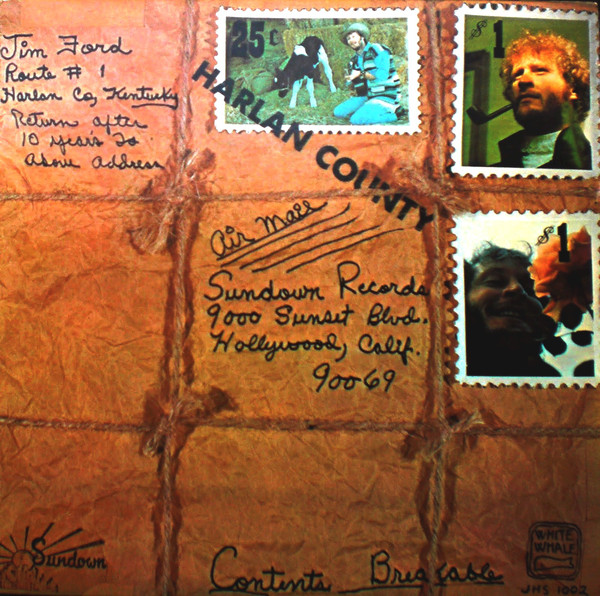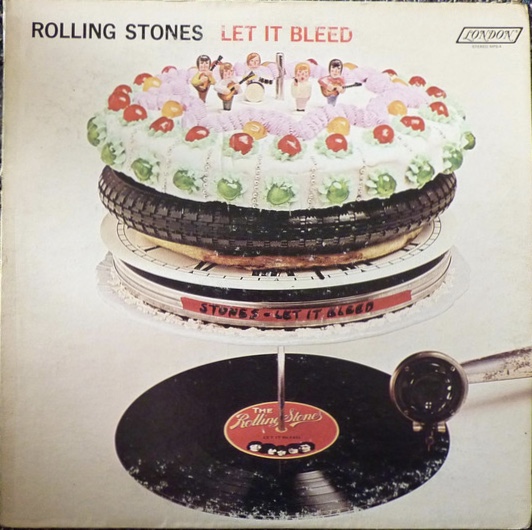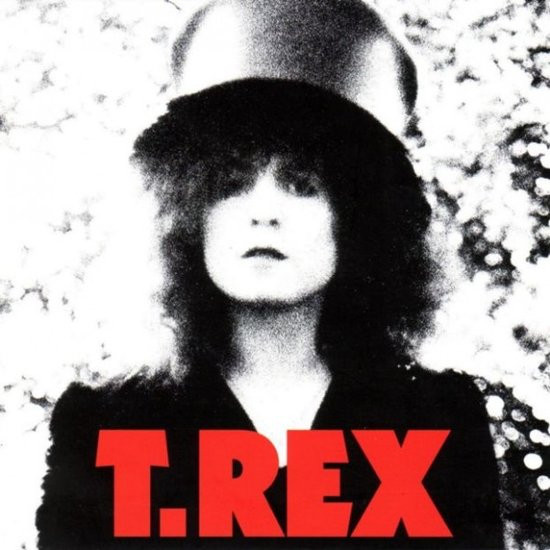In my ongoing effort to solve the puzzle of how to find great sounding records and avoid bad sounding ones, I’ve come to understand that every good sounding record shares 3 important and arguably essential features:
-
It’s mastered from a first generation tape.
-
It’s mastered properly.
-
It’s pressed well.
The first of these is the “arguably” essential feature of every great sounding record. The reason I say “arguably” here is that I have heard some records that sound pretty darn good to me that were likely mastered from second generation or “dub” tapes.
It’s impossible to be sure, but my educated guess is that, for example, the original US pressings of T. Rex’s The Slider were mastered from dubs. Nonetheless, the OG US pressing of The Slider I used to own was clearly mastered and pressed well and it sounded great to me. It wasn’t until I heard an even better sounding OG UK pressing that I realized that the reason the UK sounded even better was that it had a level of transparency that you only get from a record mastered from first a generation tape.
If your system can reveal the kind of transient information you’d find on a well mastered record that was mastered from an original tape and pressed properly, then your experience listening to that record will feature the “live in the studio” or “live at the performance” sound that we audiophiles live for. That sound will not be on records mastered from a second or later generation tape.
How do you really know then which records have been mastered from original tape and which have been mastered from dubs? Using your ears is the best way, but if we’re just starting out looking for a copy it’s helpful if we can eliminate versions mastered from dubs right out of the gate. Many collectors follow the country of origin rule – US band = US pressing, UK band = UK pressing, etc, but I’ve found that this rule doesn’t hold true often enough to be reliable.
Better Records is a great resource for eliminating dub tape versions as they often will say in the descriptions of the records they sell in which country the record was pressed and sometimes which copies to avoid. For a long list of albums that BR has found through their extensive listening sound better on US or “Domestic” pressings, click here. For a long list of pressings that BR says sound better on the “Import” pressings (UK, German, etc), click here. Keep in mind that this designation of “sound better” does not necessarily mean that these versions are the only versions mastered from first generation tapes, but in most cases that is exactly why they do “sound better”.
The second and third features of every great sounding record, proper mastering and a well pressed copy, are both ABSOLUTELY ESSENTIAL!. Of the two, proper mastering is MORE ESSENTIAL than is a good pressing. The reason for this is that a lot of properly mastered but poorly pressed copies will remain eminently playable, but a poorly mastered record will never be worth your time. This is important for EVERY collector to understand, and not just those of us seeking out the best sounding copies.
Mastering can make or break a record, and a badly mastered record is likely to be one that won’t spend much time, if any, on your turntable, no matter how much you like the music on it. For audiophile collectors who seek a peak experience with just about every record we play, bad mastering is an ABSOLUTE DEALBREAKER!
Last spring I saw an Instagram post featuring a wonderful album by an artist I’d never heard of before – Jim Ford. The album, Harlan County, released in 1969 on Sundown Records is an exciting blend of Rock, Country, Funk and Soul delivered with flair and gusto by an extremely talented American singer / songwriter who made one record and then never saw his 20th birthday. As I often do, I previewed the record on Spotify and was immediately taken with it, so much so that I immediately ordered an OG pressing for over 50 bucks.

There aren’t a ton of OG copies of Harlan County for sale out there, but they are by no means scarce. They also appear to fetch pretty good prices AND, more often than not, be in very good condition.
That tells you something about this record – people bought it but not many of them actually played it. Why is that? Well, I would guess it’s because the record just doesn’t sound very good, at least the copy I have doesn’t. In what way does it not sound good? The vocals have a wonky brightness that smacks of bad mastering, and when the artist you’ve sat down to listen to is sounding that way, you don’t tend to go back for more, not matter how good his songs are.
Would a better pressing solve this problem? Maybe, but there are 3 OG versions of Harlan County out there and two of them appear to have the same stampers as the copy I own. Therefore I’d venture to guess that your chances of finding a great sounding copy of this record are pretty slim, maybe impossible. I’d also venture to suggest that bad mastering is in a small way responsible for the fact that a lot of us have never heard of Jim Ford.
The third and final essential feature of every great sounding record, proper pressing, is undoubtedly the most elusive. We can learn about the pressing factories that were in operation at the time that many of the vintage pressings we seek were released and we can sometimes find leads on which of these factories were more likely than the others to press better copies, but there’s always an element of chance with this. You might be able to increase your chances of say, finding a great sounding copy of The Rolling Stones’ Let It Bleed by choosing a Waddell pressing instead of a Bell Sound pressing, but it’s still no guarantee the Waddell you get will sound great.

Currently there is at least one pressing plant in operation seeking to eliminate the variables of pressing vinyl records and shore up the contribution that the pressing facility makes toward a producing a great sounding copy. Quality Record Pressings who presses for several record companies including Analogue Productions has modified their equipment in an attempt to produce consistently higher quality copies, and they limit the number of copies pressed from each piece of metal work so as to avoid pressing copies with degraded stampers.
But IT’S WHAT’S ON THE STAMPERS THAT MATTERS MOST! And even if a pressing plant could achieve quality control to the level that they press onto each copy ALL of the content from every master stamper, in may not really matter. If the content on that master stamper is that of a poorly mastered record then any record pressed from is not going to sound good.
This is the reason that with just one copy of a record we can make some generalizations about that one version of the record. If one copy of a pressing is clearly not mastered right then we can pretty much guarantee none of the copies with those stampers will sound good. But if one copy of a version IS mastered properly and still doesn’t sound good, presumably because its not a well pressed copy, then at least we know if we persist in buying other copies with those stampers eventually we’re likely to get a good one (assuming it’s been mastered from an original tape, which we need to determine first).
How long it takes to find a good copy of a record is anyone’s guess, and maybe some of us are only willing to buy one or two copies of a given title in the hopes of finding a good one. Still, I’d say we’re WAY better off buying a copy of a title that we know has been mastered properly than buying one that we don’t know has been mastered properly. At least this way we can control for this one essential variable.
Going forward I will be publishing some short “reviews” of a sort, under the heading “MASTERING: The Good, The Bad & The Ugly.” These will feature some of the records I’ve found that are clearly not mastered properly as well as some that clearly are. My hope is that this will help guide other collectors when narrowing down their choices once they’ve decided to track down a particular title.
In the meantime, start paying more attention to the records you play. You’ll find that a pattern emerges where records will begin to fall into one of 3 categories:
-
Records that don’t sound good because of bad mastering
-
Records that don’t sound good because of bad pressing or a sub generation tape source
-
Records that DO sound good!
This is where your willingness to TURN UP THE VOLUME can really pay off. Records from the first category CANNOT be played loud. The louder you play these records the worse they sound. Records in the second category can be played loud without driving you crazy, and you might even enjoy them for a while. But after that while and likely sooner, these records will start to reveal their flaws and you’ll find that, at the very least, you won’t be flipping the record over.
Records in the third category will, unfortunately, include the smallest number of records in your collection. If this turns out not to be the case then either you need to do some work on your system or you’re just not paying close attention. These records can be played loud without much or any distortion and often just keep sounding better the louder you play them.
Picking the winners and losers in your collection can be hard work with a lot of hard truths earned along the way, but it can also be extremely fun and rewarding while adding a lot of value to your collection. It will absolutely positively BE A LEARNING EXPERIENCE, and one that I would encourage anyone who calls themself and audiophile to explore.
If any of you out there endeavor to embark on this process, I’d be THRILLED to hear from you and have you share some of the insights and discoveries you’ll no doubt make. Just send you comments to this article and I’ll get back in touch!
